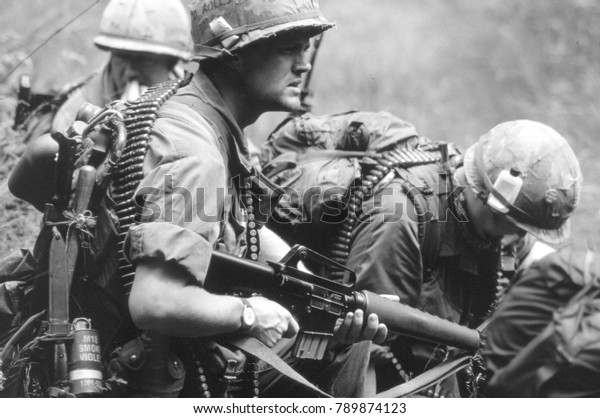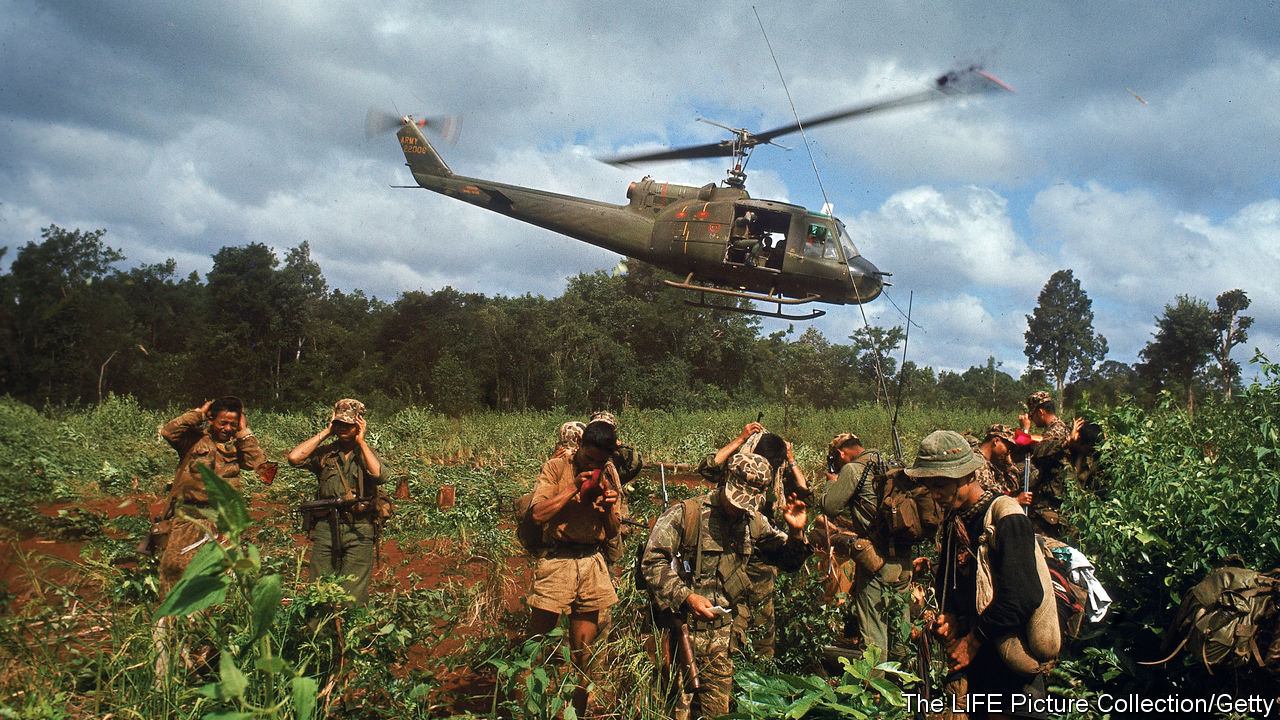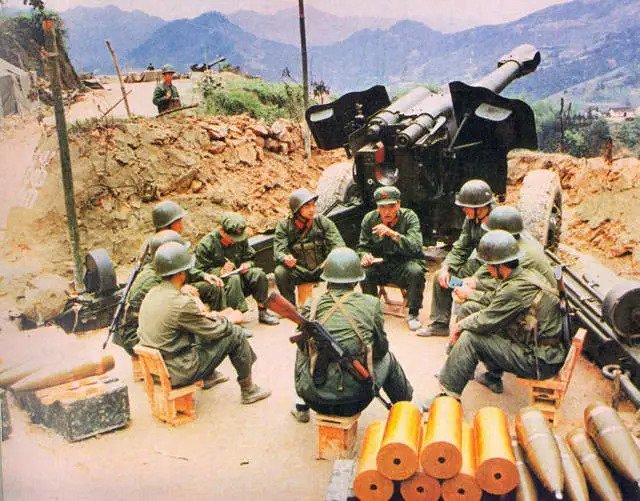Vietnam War Causes, Events, US Role, Tactics, Impact, Protests, Agent Orange, Tet Offensive, War Crimes, Legacy

Explore the causes of the Vietnam War, major events and battles, the role of the United States, Viet Cong and North Vietnamese Army tactics, impact on Vietnamese civilians, protests and opposition, Agent Orange and its effects, the Tet Offensive, war crimes and atrocities, as well as the lasting legacy and consequences.
Causes of the Vietnam War
The causes of the Vietnam War can be attributed to a combination of factors. Some key causes include:
- Cold War dynamics: The conflict between the United States and the Soviet Union during the Cold War influenced the Vietnam War. As part of its containment policy, the U.S. supported South Vietnam in order to prevent the spread of communism in Southeast Asia.
- Domino Theory: The belief that if one country fell to communism, neighboring countries would follow suit. The U.S. feared that if South Vietnam fell to communism, it could have a domino effect on other countries in the region.
- Vietnamese nationalism: The desire for independence and reunification fueled the Vietnamese nationalist movement. Ho Chi Minh and the Viet Minh sought to unite North and South Vietnam under a communist government.
- French colonialism: The French had colonized Vietnam and were engaged in a war against Vietnamese nationalist forces before the U.S. became involved. The defeat of the French at Dien Bien Phu in 1954 led to the division of Vietnam into North and South.
- Gulf of Tonkin incident: This event in 1964, where U.S. naval vessels were allegedly attacked by North Vietnamese boats, provided a justification for increased American involvement in the war.
- U.S. commitment and military escalation: The U.S. gradually increased its military involvement in Vietnam, sending troops and providing financial aid to South Vietnam. The aim was to support the South Vietnamese government and prevent a communist takeover.
It is important to note that the causes of the Vietnam War are complex and multifaceted. Various political, ideological, and historical factors contributed to the escalation of the conflict.
Major events and battles in the Vietnam War
The Vietnam War (1955-1975) was a significant conflict that involved major events and battles. Here are some key ones:
- Gulf of Tonkin Incident (1964): The alleged attack on U.S. Navy ships by North Vietnamese forces led to increased American involvement in the war.
- Tet Offensive (1968): A large-scale surprise attack by the North Vietnamese and Viet Cong during the lunar new year, challenging the perception that the U.S. was winning the war.
- Battle of Khe Sanh (1968): A protracted siege of the U.S. Marine base in northern South Vietnam, symbolizing American determination to hold territory.
- Operation Rolling Thunder (1965-1968): A sustained bombing campaign by the U.S. targeting North Vietnam, aimed at weakening the enemy’s infrastructure and morale.
- Battle of Ia Drang (1965): One of the first major confrontations between U.S. forces and the North Vietnamese Army, depicted in the book and film “We Were Soldiers.”
- Siege of Huế (1968): A bloody battle during the Tet Offensive where the city of Huế was captured and recaptured by both sides.
- Ho Chi Minh Trail: A network of supply routes used by the North Vietnamese to transport troops and supplies through neighboring Laos and Cambodia.
- Paris Peace Accords (1973): Negotiations held in Paris, leading to a ceasefire and the withdrawal of U.S. troops from Vietnam.
- Fall of Saigon (1975): The capture of South Vietnam’s capital by North Vietnamese forces, marking the end of the war and the reunification of Vietnam.
These events and battles played significant roles in shaping the outcome of the Vietnam War.
Role of the United States in the Vietnam War

The United States played a significant role in the Vietnam War. It provided military assistance to South Vietnam in an effort to prevent the spread of communism from North Vietnam, which was supported by the Soviet Union and China. The U.S. deployed hundreds of thousands of troops, conducted bombing campaigns, and engaged in ground combat. However, despite massive military efforts, the U.S. failed to achieve its objectives and withdrew its forces in 1973. The war resulted in a large number of casualties and had a profound impact on American society and foreign policy.
Viet Cong and North Vietnamese Army tactics
Viet Cong and North Vietnamese Army (NVA) tactics during the Vietnam War involved a combination of guerrilla warfare and conventional military strategies. The Viet Cong, which was the guerrilla force, and the NVA employed different tactics to fight against the South Vietnamese government and its allies, including the United States.
The Viet Cong primarily focused on guerrilla warfare tactics, using hit-and-run attacks, ambushes, booby traps, and assassination campaigns. They relied heavily on the support of the local population and used underground tunnels and hidden base camps for shelter and resupply. Their objective was to wear down the enemy’s morale and resources over an extended period.
On the other hand, the NVA employed more conventional military tactics, such as large-scale offensives and frontal assaults. They aimed to engage in traditional battles against their adversaries, utilizing artillery, tanks, and infantry units. The NVA often implemented the strategy of “human wave” attacks, overwhelming enemy defenses with sheer numbers.
Both the Viet Cong and the NVA utilized a system of supply routes known as the Ho Chi Minh Trail, which provided logistical support and facilitated the movement of troops and supplies from North Vietnam into the South. This network of trails and roads allowed them to maintain a constant flow of reinforcements and sustain their operations.
Overall, the Viet Cong and NVA tactics were designed to exploit the weaknesses of their opponents, avoid direct confrontations whenever possible, and prolong the conflict to outlast their more technologically advanced adversaries.
Impact of the Vietnam War on Vietnamese civilians

The Vietnam War had a significant impact on Vietnamese civilians. They faced immense hardships, including displacement, loss of life, and economic devastation. The war led to the mass migration of people from rural areas to urban centers, resulting in overcrowding and strained resources. Civilian casualties were high due to bombings, military operations, and the widespread use of chemical agents like Agent Orange. The war also disrupted agriculture and infrastructure, leading to food shortages and a struggling economy. Long-lasting consequences such as physical and psychological trauma, environmental damage, and social divisions continue to affect Vietnamese society today.
Protests and opposition to the Vietnam War

Protests and opposition to the Vietnam War were widespread and significant during the 1960s and early 1970s. The war sparked a strong anti-war movement characterized by various forms of dissent and activism.
Many Americans opposed the Vietnam War for multiple reasons. Some objected to the draft, which required young men to serve in the military involuntarily. Others criticized the government’s rationale for involvement, questioning the legitimacy of U.S. intervention in Vietnam and the goals of the war.
The anti-war movement gained momentum as the conflict escalated and casualties increased. People organized large-scale protests, marches, and rallies across the country, expressing their discontent with the war. These demonstrations were often met with resistance and clashes with law enforcement.
College campuses became hotbeds of anti-war sentiment, with student-led protests and sit-ins demanding an end to the war. The movement was also fueled by opposition to the draft and concerns about the disproportionate burden placed on marginalized communities.
Public opinion gradually shifted against the war, influenced by media coverage that exposed the realities and atrocities of the conflict. The publication of the Pentagon Papers, which revealed government deception and misrepresentation regarding the war, further eroded public trust and support.
Notably, the anti-war movement was diverse, comprising pacifists, civil rights activists, veterans, feminist groups, and religious organizations. It united people from various backgrounds under the shared goal of ending the war.
The protests and opposition had a significant impact on shaping public discourse and policy decisions. They contributed to President Lyndon B. Johnson’s decision not to seek re-election in 1968, and ultimately led to the withdrawal of U.S. troops from Vietnam in 1973.
In summary, protests and opposition to the Vietnam War were driven by a range of factors, including opposition to the draft, skepticism about the war’s justification, and the desire to bring American troops back home. The anti-war movement played a crucial role in raising awareness, mobilizing public opinion, and ultimately influencing the course of the war.
Agent Orange and its effects during the Vietnam War
Agent Orange was a herbicide used by the United States military during the Vietnam War. It contained a toxic chemical called dioxin, which had devastating effects on both the environment and human health. When sprayed over large areas of vegetation, Agent Orange destroyed crops and forest cover, denying the enemy of food and hiding places. However, it also contaminated water sources and caused long-lasting damage.
Exposure to Agent Orange had severe consequences for soldiers and civilians alike. The dioxin in Agent Orange is highly toxic and can lead to various health issues, including cancers, birth defects, skin diseases, and neurological disorders. Many veterans who were exposed to Agent Orange developed serious illnesses years later, such as cancer (including leukemia), diabetes, and respiratory problems.
Furthermore, the ecological impact of Agent Orange was significant. Large areas of forests were defoliated, disrupting ecosystems and destroying habitats for wildlife. The dioxin entered the soil and water systems, contaminating rivers, lakes, and agricultural lands, with lasting effects on plant and animal life.
The use of Agent Orange during the Vietnam War remains a tragic chapter in history, causing immense suffering and long-term health consequences for those affected. Efforts have been made to clean up contaminated areas and provide assistance to affected individuals, but the legacy of Agent Orange continues to impact Vietnam and its people to this day.
The Tet Offensive in the Vietnam War
The Tet Offensive was a major military campaign launched by the North Vietnamese and Viet Cong forces during the Vietnam War. It began on January 30, 1968, during the Vietnamese New Year holiday known as Tet.
The offensive involved simultaneous attacks on multiple targets throughout South Vietnam, including cities, towns, and military bases. The goal of the offensive was to spark a popular uprising among the South Vietnamese population and weaken the resolve of the United States and its allies.
Although the Tet Offensive initially caught the allied forces off guard and resulted in heavy casualties, it ultimately proved to be a strategic failure for the North Vietnamese. The offensive demonstrated their ability to launch large-scale attacks but failed to incite the expected mass uprising. Furthermore, the allied forces quickly regrouped and launched counteroffensives, effectively repelling the enemy assaults.
The Tet Offensive had a significant impact on public opinion in the United States, leading to increased anti-war sentiment and eroding support for the war effort. It marked a turning point in the conflict, as it became apparent that victory would not be easily achieved.
In conclusion, the Tet Offensive was a pivotal event in the Vietnam War that showcased the determination and capabilities of the North Vietnamese and Viet Cong forces. Although it did not achieve its intended objectives, it had far-reaching consequences for the war and its perception both domestically and internationally.
War crimes and atrocities in the Vietnam War
War crimes and atrocities were committed by various parties during the Vietnam War, which took place from 1955 to 1975. The conflict involved North Vietnam and its communist allies fighting against South Vietnam and its anti-communist allies, including the United States.
Several incidents during the war have been classified as war crimes or atrocities. These include the My Lai Massacre in 1968, where American soldiers killed hundreds of unarmed Vietnamese civilians, including women, children, and the elderly. Another notable incident is the bombing campaign conducted by the U.S. forces, which resulted in extensive civilian casualties and the destruction of non-military targets.
The North Vietnamese and Viet Cong forces were also responsible for committing war crimes. They utilized tactics such as guerilla warfare, targeting civilians and assassinating political opponents. Additionally, they operated prison camps where torture, executions, and other human rights abuses occurred.
It is important to note that war crimes and atrocities are violations of international humanitarian law and are condemned by the international community. The Vietnam War was characterized by widespread violence and brutality on all sides, resulting in immense suffering for the Vietnamese people.
The consequences of these war crimes and atrocities continue to impact individuals and communities affected by the war. Efforts to address the past and promote reconciliation have been made by both the United States and Vietnam, including investigations, legal proceedings, and initiatives aimed at providing assistance and support to victims and their families.
Legacy and consequences of the Vietnam War
The Vietnam War, which lasted from 1955 to 1975, had a significant and enduring impact on Vietnam, the United States, and the world. Its legacy and consequences are multifaceted:
- Human toll: The conflict resulted in immense human suffering, with millions of Vietnamese civilians and military personnel killed, injured, or displaced. The war also claimed the lives of over 58,000 American soldiers.
- Political divisions: The war deepened political divisions within the United States, sparking widespread anti-war protests and leading to a loss of public trust in government institutions. It prompted a reevaluation of U.S. foreign policy and the concept of interventionism.
- Geopolitical dynamics: The Vietnam War drew global attention and became a symbol of the broader Cold War struggle between the United States and the Soviet Union. The conflict highlighted the limitations of American military power and influenced subsequent U.S. foreign policy decisions.
- Reunification of Vietnam: The war ended with North Vietnam’s victory and the reunification of the country under communist rule. This outcome had profound consequences for Vietnam’s political, economic, and social development.
- Economic impact: The war left Vietnam devastated, with extensive damage to infrastructure, agriculture, and industry. The country faced significant challenges in rebuilding its economy and recovering from the war’s consequences.
- Agent Orange and lasting health effects: The use of defoliants, particularly Agent Orange, during the war has had long-lasting health and environmental consequences. Many Vietnamese and American veterans have experienced serious health issues linked to exposure to these chemicals.
- Lessons learned: The Vietnam War shaped subsequent military strategies and influenced international conflicts, reinforcing the importance of understanding local contexts and the limits of military force. It has been a subject of study and debate, providing valuable insights into the complexity and challenges of modern warfare.
Overall, the legacy and consequences of the Vietnam War continue to be felt today, both in terms of the direct impact on Vietnam and the lasting lessons learned by the international community.
